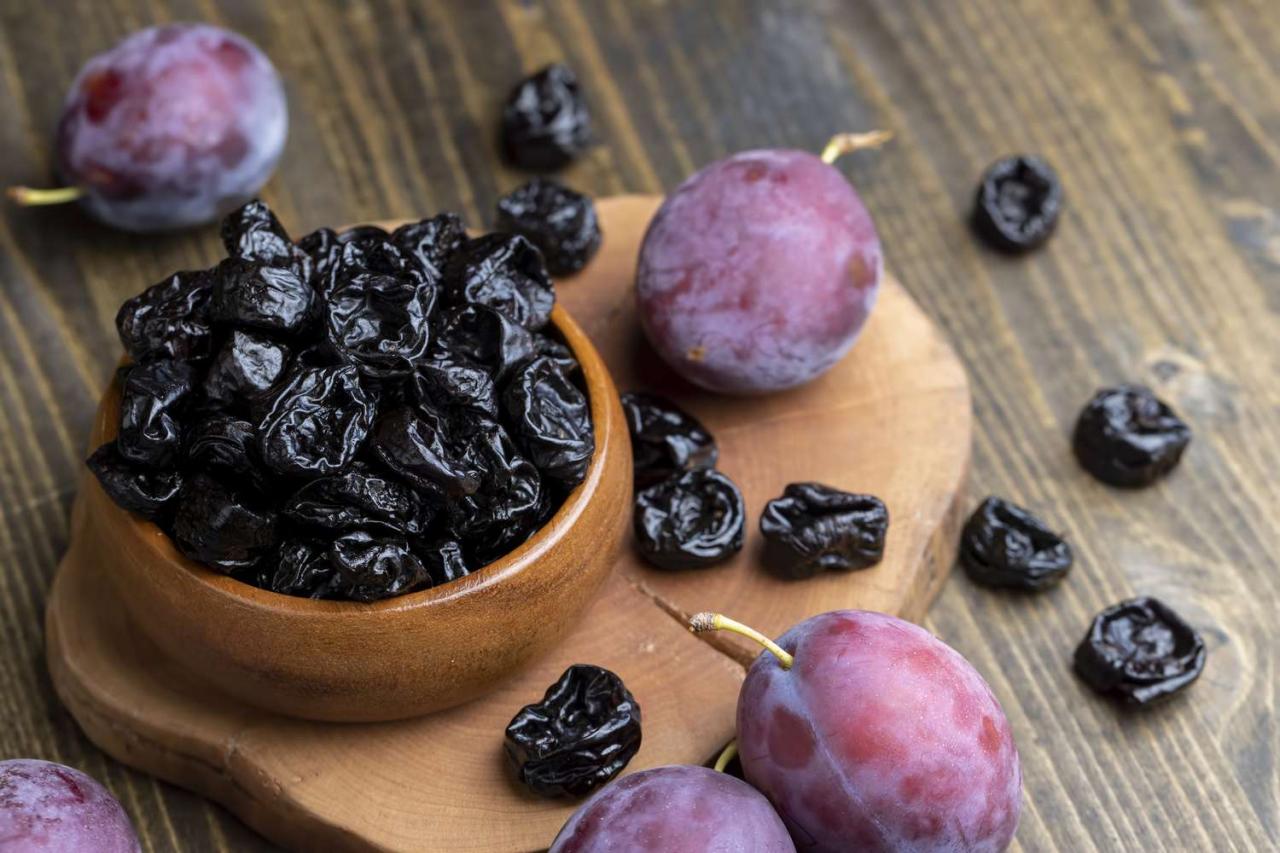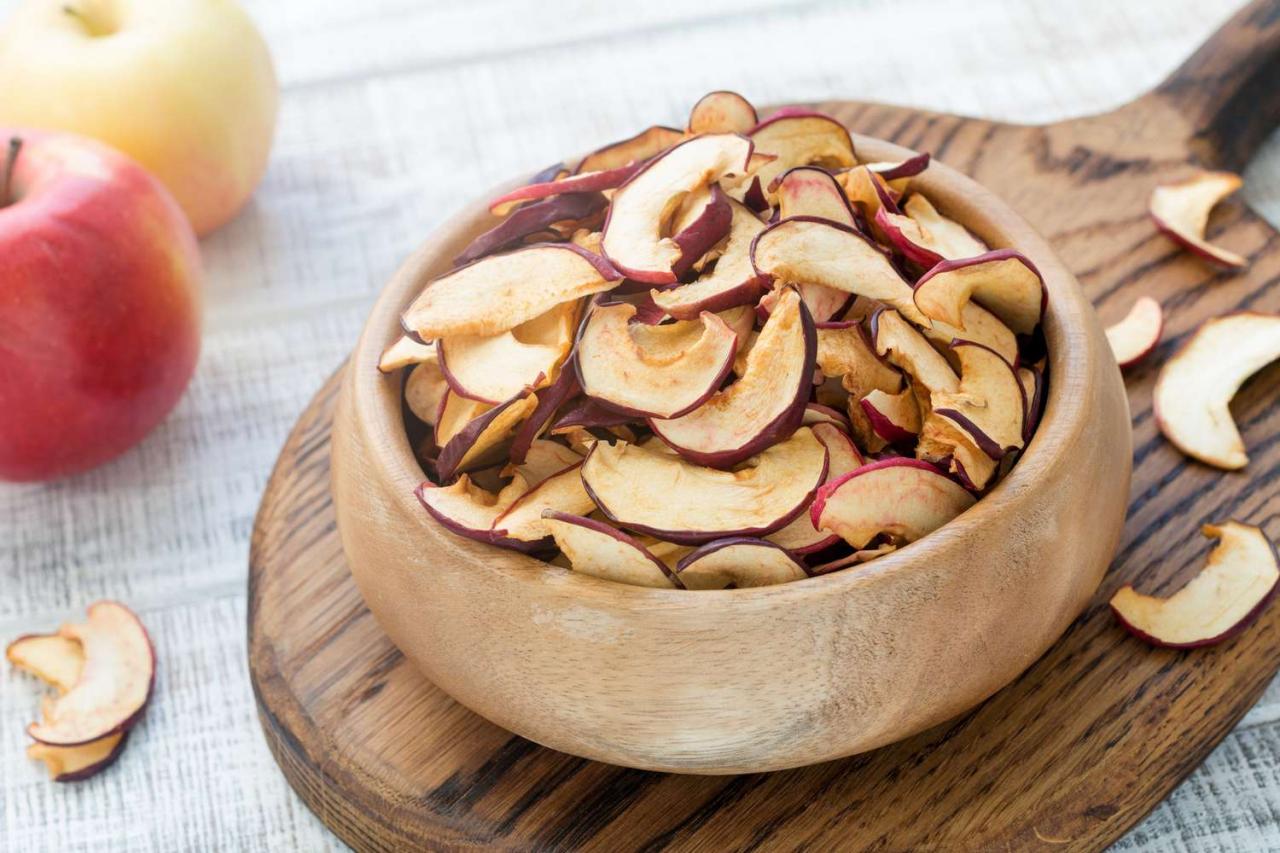Fruits are an essential part of a well-balanced diet. They are packed with fiber, vitamins, and minerals. However, while raw fruit is refreshing and nutritious, it's not always as portable.
Dried fruits, on the other hand, are sweet, snackable, but do they offer the same health benefits as their raw fruit origins? Once the water is removed from fresh fruit, the remaining product is more concentrated in calories, and the drying process may also remove a significant portion of the fruit's vitamin content.
That said, dehydrated fruits can contribute to a healthy diet, some just have more to offer than others. Here are the healthiest dried fruits you can eat.
Dried Apricots 
BURCU ATALAY TANKUT / Getty Images
Apricots are a nutrient-dense stone fruit, and in their raw form, they’re rich in vitamins C and vitamin A. Their antioxidant content is revered for its role in the body, supporting the immune system, skin and eye health, and the fight against oxidative stress. So, it doesn’t come as a surprise that many people opt for dried apricots when consuming dried fruit.
Apricots lose a significant portion of their vitamin C during the drying process, but they remain rich in other important nutrients. They are a good source of potassium, which plays a role in hydration and muscle contraction, and copper, which is essential for red blood cell formation.
A 1/2-cup serving of dried apricots provides:
Calories: 157Carbohydrates: 40.7 grams (g)Protein: 2.2 gFat: 0.33 gFiber: 3.7 gSugar: 34.7 gVitamin A: 117 micrograms (mcg) (13% DV)Vitamin E: 2.8 milligrams (mg) (18% DV)Potassium: 755 mg (16% DV)Copper: 0.22 mg (24% DV) Dried Prunes 
ligora / Getty Images
Prunes and plums have similar nutrition profiles, but prunes are often highlighted for their roles in gastrointestinal and bone health. Prunes are a good source of soluble and insoluble fiber, encouraging healthy digestion and regular bowel movements.
The vitamin K content in prunes is praised for its antioxidant properties that help prevent bone loss and encourage bone formation. Prunes are also rich in vitamin B6, an important nutrient for brain development and keeping the immune and nervous systems healthy.
A 1/2-cup serving of dried prunes provides:
Calories: 209Carbohydrates: 55.5 gProtein: 1.9 gFat: 0.33 gFiber: 6.2 gSugar: 33 gVitamin K: 52 mcg (43% DV)Vitamin B6: 0.18 mg (10% DV)Potassium: 635 mg (13% DV) Dried Figs 
BURCU ATALAY TANKUT / Getty Images
When dehydrated, figs become a soft and sweet snack, packed with nutrients. Figs are often associated a laxative effects, prompting many people to eat them for GI support. While a 1/2 cup serving doesn’t provide significant amounts, it does provide some calcium, potassium, and magnesium. These minerals support various aspects of health including bone, cardiovascular, and muscle health.
A 1/2-cup serving of dried figs provides:
Calories: 125Carbohydrates: 32 gProtein: 1.7 gFat: 0.46 gFiber: 1.9 gSugar: 24 gMagnesium: 34 mg (8% DV)Calcium: 81 mg (6% DV)Potassium: 340 mg (7%DV) Dried Apples 
Arx0nt / Getty Images
Dried apples may not contain as many nutrients as other dried fruits, but they tend to be lower in calories. Those who like to snack by volume can enjoy more dried apples without skewing their daily calorie intake. Plus, they provide a decent amount of copper, which supports a healthy immune system and red blood cell formation.
A 1/2-cup serving of dried apples provides:
Calories: 104Carbohydrates: 28.4 gProtein: 0.4 gFat: 0.14 gFiber: 3.7 gSugar: 24.6 gCopper: 0.8 mg (9% DV) Dried Cranberries 
salez / Getty Images
Cranberries are a welcomed dish at many holiday parties, but they offer nutritional benefits all year round in dehydrated form. Their rich color indicates a potent antioxidant profile that can help fight free radicals contributing to various health concerns.
Fresh cranberries are rich in vitamin C and many other important nutrients. However, dried cranberries lose some of those nutrients during dehydration. Still, they contain some vitamin C and a decent amount of fiber.
A 1/2-cup serving of dried cranberries provides:
Calories: 247Carbohydrates: 66 gProtein: 0.14 gFat: 0.87 gFiber: 4.2 gSugar: 58 g Dried Mangos 
Kinga Krzeminska / Getty Images
The mango is a tropical fruit that boasts a sweet taste and many health benefits. It’s a seasonal and highly perishable fruit, but you can enjoy its benefits all year round in dried form. Dried mango has a much longer shelf life than its fresh counterpart and it still packs a punch nutritionally. For example, a 1/2 cup serving provides 33% of the recommended intake for vitamin C.
A 1/2-cup serving of dried mango provides:
Calories: 255Carbohydrates: 63 gProtein: 1.9 gFat: 1.5 gFiber: 1.9 gSugar: 53 gVitamin C: 33.9 mg (38% DV) Raisins 
Adela Stefan / Getty Images
Despite their small size, raisins have a lot to offer nutritionally. They contain many vitamins and minerals, as well as a decent amount of fiber per serving. They tend to be high in sugar and calories, but when consumed mindfully, they can support healthy digestion, iron levels, and bones.
A 1/2-cup serving of raisins provides:
Calories: 150Carbohydrates: 39.7 gProtein: 1.6 gFat: 0.13 gFiber: 2.3 gSugar: 32.6 g Dried Dates
Dates are occasionally mistaken for prunes, but they are an entirely separate fruit. Because of their sweetness, they are often used as a sweetening agent in many vegan recipes. Dried dates have a long shelf life and typically take on a golden or red hue—a sign of their antioxidant content and potential impact on the immune system.
One pitted Medjool date provides:
Calories: 69Carbohydrates: 39.7 gProtein: 0.45 gFat: 0.03 gFiber: 1.7 gSugar: 16.5 g
Dried dates will be smaller in size, potentially affecting the amount consumed before feeling satisfied.
Dried Pears 
HandmadePictures / Getty Images
Dried pears offer many of the same nutrients as their fresh counterparts, even after dehydration. They contain many of the same phytonutrients, like antioxidants and flavonoids, that offer several health benefits. Plus, every 1/2 cup of dried pears provides almost 4 g of fiber, which can support healthy digestion, fight inflammation, and lower the risk of heart disease.
A 1/2-cup serving of dried pears provides:
Calories: 131Carbohydrates: 34.9 gProtein: 0.94 gFat: 0.32 gFiber: 3.8 gSugar: 31.1 gCopper: 0.19 mg (21% DV) Dried Cherries 
Federherz / Getty Images
Dried tart cherries are rich in color, much like fresh cherries, indicating a rich antioxidant profile. Fresh cherries have been linked to many improved health markers, including decreased oxidative stress, improved nutrition-related lab values, and enhanced sleep. They are packed with vitamin C, and dried cherries retain much of the antioxidant.
A 1/2-cup serving of dried cherries provides:
Calories: 266Carbohydrates: 64 gProtein: 1 gFat: 0.58 gFiber: 2 gSugar: 53.8 gVitamin C: 15.4 mg (17% DV) Dried Bananas 
Federherz / Getty Images
Dried bananas, often called banana chips, can be a delectable snack to take on the go. Much of their moderate calorie content comes from carbohydrates. However, a standard serving contains a small amount of protein as well.
Dried bananas are a good source of fiber, supporting gut and heart health. A 1/2 cup serving also provides 16% of the daily value recommended for potassium, an electrolyte necessary for cell function.
A 1/2-cup serving of dried bananas provides:
Calories: 173Carbohydrates: 44.2 gProtein: 1.9 gFat: 0.91 gFiber: 5 gSugar: 23.7 gPotassium: 745 mg (16% DV) Dried Coconut 
Blanchi Costela / Getty Images
Dried coconut differs from other dried fruits in that it isn't as snackable. However, dried coconut shavings are a versatile ingredient, spicing up a variety of recipes. They can be added to smoothies, acai bowls, baked goods, and more.
Still, it's important to remember that coconuts are nutrient-dense. Even a small serving contains significant calories and fat. Those trying to minimize their calorie intake may need to opt for a different dried fruit.
A 1/2-ounce serving of coconut flakes provides:
Calories: 330Carbohydrates: 39.7 gProtein: 3.4 gFat: 32.3 gFiber: 8.2 gSugar: 3.7 g What to Look For When Buying Dried Fruit
Dried fruits can be a convenient and nutritious snack, but some factors might certain fruits a healthier choice. Opt for products with no added sugar and higher fiber content to reduce their impact on blood sugar levels while also promoting a healthy gut. If you are sensitive to preservatives like sulfur dioxide, look for dried fruits made without sulfur.
When buying dried fruit, opt for whole, minimally processed fruits instead of the diced varieties. Fewer steps required during production typically translate to more retained nutrients, maximizing the nutritional impact of your snack.
How to Dry Fruit at Home
Making your own dried fruit at home can be a fairly straightforward process that offers several advantages. Dehydrating fruit at home gives you control over the ingredients and their quality. It ensures freshness and helps eliminate added sugars and preservatives. Plus, it allows for the opportunity to experiment with flavors to meet personal preferences.
Preparing dried fruit at home requires very few pieces of equipment. Dried fruit can be prepared in a dehydrator or oven. To start, slice your fresh fruit evenly to ensure even drying. Arrange the slices on the dehydrator trays or baking sheets. If using a dehydrator, set the temperature to the recommended setting for the fruit. If using an oven, preheat to a low temperature around 140-160°F.
It will take several hours to dry the fruits. Flip the slices regularly throughout the drying process to ensure even textures. When the fruit is leathery and pliable, it's done.
Tips for Eating Dried Fruit
Dried fruits tend to be a concentrated source of natural sugars, which may contribute to excessive calorie intake. The recommended serving size for dried fruit is typically around 1/4 or 1/2 cup, depending on the type of fruit. Still, there are several ways to mindfully incorporate dehydrated fruit into a balanced diet.
Trail Mix: Combine dried fruit with other ingredients, such as nuts, seeds, and dark chocolate, for a satisfying and energy-boosting snack.Oatmeal or Yogurt Toppings: Sprinkle dried fruit on oatmeal or yogurt to add texture and yogurt to a classic, nutrient-dense meal.Baked Goods: Add dried fruit to homemade baked goods, like muffins, cookies, and granola bars.Salads: Add dried fruit to salads to increase the nutrient value and add a sweet taste to the refreshing blend of veggies.
Dried fruits can add a pop of flavor to many dishes, but it's essential to monitor portion sizes to prevent overconsumption of calories and sugar. Pair them with other food groups to ensure the intake of a wide range of nutrients and help increase satiety.
A Quick Review
Dried fruits can be a nutritious addition to a well-balanced diet when consumed mindfully. While most fruits can undergo a drying process, some retain more nutrients than others. If drying fruits at home is an option, avoid adding sugar and consider experimenting with flavors instead. If shopping for dried fruits, look for minimal ingredients and no added sugar.
The typical serving size ranges between 1/4-1/2 cup, depending on the specific fruit. Dried fruits can be enjoyed on their own or added to a variety of meals and snacks—mixed into trail mix, sprinkled on a salad, added to homemade baked goods, and more. A registered dietitian can help navigate the nutrition impact that dried fruits present and help incorporate them into a healthy diet.